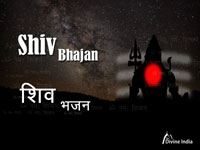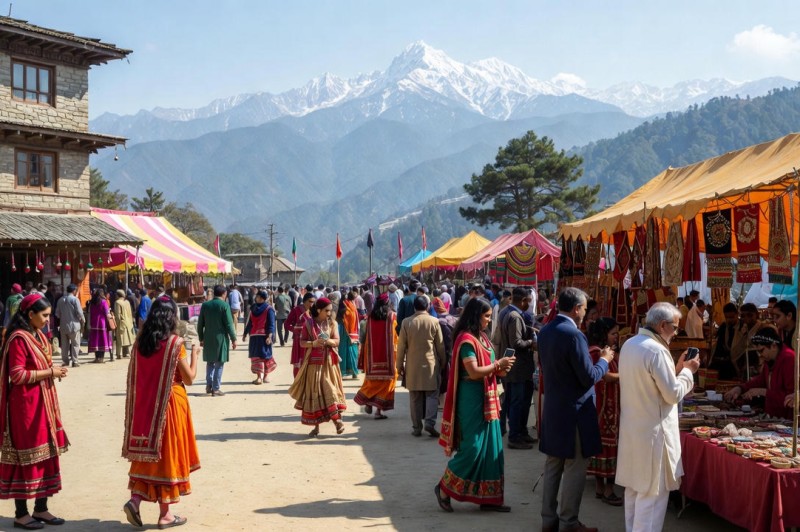

Tvamēka: Śud'dhō̕si tvaya nigamabāhya malamayaṁ prapaśyanti bhramaparavaśā: Pāpaniratā: .
Bahistēbhyaḥ kr̥tvā svapadārtha mānaya vibhō gajēndrē dr̥ṣṭaṁ tē śaraṇada vadān'yaṁ svapadadam..1..
Na sr̥ṣṭē haniryadi hi kr̥payātō̕vasi ca māṁ tvayānēkē guptā vyasanamiti tē̕sti śrutipathē.
Atō māmurtuṁ ghaṭāya mayi dr̥ṣṭīṁ suvimalāṁ na riktāṁ mē yācyāṁ svajana kartuṁ bhava harē..2..
Kadāhaṁ bhō svāminniyatamanasā tvāṁ hradi bhajannabhadrē sansārē hrāṇavaratadu:Khē̕tivirasa: .
Labhēyaṁ tāṁ śāntiṁ paramamunibhiryā hrādhigatā dayāṁ kr̥tvā mē tvaṁ vitara paraśāntiṁ bhavahara.3.
Vidhātā cēdviśvaṁ sr̥jati sr̥jatāṁ mē śubhakr̥tiṁ vidhuścētpātā māvatu janimr̥tērdu:Khajaladhē: .
Hara: Sanhartā sanhartu mama śōkaṁ sajanakantyahaṁ mukta: Syāṁ kimapi tu tathā tē vidhātām..4.
Ahaṁ brahmānandastvamapi ca tadākhya: Suvidita statō̕haṁ bhinnō nō kathamapi bhavatta: Śrutidr̥śā.
Tathā cēdānīṁ tvayi mama vibhēdasya jananīṁ svamāyāṁ sanvārya prabhava mama bhēdaṁ nirasitam..5..
Kadāhaṁ hē svāmijñajanmr̥timayaṁ duḥkhanibiḍaṁ bhavaṁ hitvā satyē̕navaratasukhē svātmavapuṣi.
Ramē tasminnityaṁ nikhilamun'yō brahmarasikā ramantē yasminstē kr̥tsakalakr̥tyajuvarā: ..6.
Paṭhantyakē śāstrāmpara nigamamaparē tattyāyā yajantyānē tvāṁ vai dadati cadānstava hitān.
Ahaṁ tu svāminstē śaraṇamagamaṁ sansr̥tibhayādhathā tē prītiḥ syād'dhitakara tathā svaṁ kuru vibhō..7.
Ahaṁ jyōtirnityō gaganamiva tr̥pta: Sukhamaya: Śrutau sid'dhō̕dvaita: Kathamapi na bhinnō̕smi vidhuta: .
Iti jñātē tatvē bhavati ca para: Sansr̥tilayādatasta tatvajñānaṁ mayi sughaṭayēstvaṁ hi kr̥payā..8..
Anādau sansārē janimr̥timayē duḥkhitamanā mumukṣu: Saṅkaścidbhajati hi guruṁ jñānaparamam.
Tatō jñātvā yaṁ vai tudati na: Klēśanivahairbhajē̕haṁ taṁ dēvaṁ bhavati ca parō bhajanāt..9.
Vivēkō vairāgyō na ca śamadamādyā: Ṣaḍaparē mumukṣā mē nāsti prabhavati kathaṁ jñānamamalam.
Ata: Viśvābdhēstaraṇasaraṇiṁ māmupadiśan svabud'dhiṁ śrautīṁ mē vitara bhagavanstvaṁ hi kr̥payā.10.
Kadāhaṁ bhō svāminnigamamativēdhaṁ śivamayaṁ cidānandaṁ nityaṁ śrutihr̥taparicchēdanivaham.
Tvamarthābhinnaṁ tvambhirama ihātman'yavirataṁ manīṣāmēvaṁ mē saphalaya vadān'ya svakr̥payā..11.
Yadarthaṁ sarvaṁ vai priyamasudhanādi prabhavati svayaṁ nān'yārthō hi priya iti ca vēdē praviditam.
Sa ātmā sarvēṣāṁ janamr̥timatāṁ vēdagadistatō̕haṁ taṁ vēdhaṁ sthiramalaṁ yāmi śaraṇam..12..
Māyā tyaktaṁ sarvaṁ kathamapi bhavētsvātmani matistvadiyā māyā māṁ prati tu viparītaṁ kr̥tavatī.
Tatō̕haṁ kiṁ kuryāṁ na hi mama mati: Kvāpi carati dayāṁ kr̥tvā nātha svapadaśaraṇāṁ dēhi śivadam..13.
Nagā daityā: Kīśā bhavajaladhipāraṁ hi gamitāstvayā cān'yē svāmiṅkimiti samayē̕smiñcchayitavān.
Na hēlāṁ tvaṁ kuryāstvayi nihitasarvē mayi vibhō na hi tvāhaṁ hitvā kamapi śaraṇa cān'yamagamam..14.
Anantā vijñā na guṇajaladhēstē̕ntamagamanata: Pāraṁ yāttava guṇagaṇānāṁ kathamayam.
Gr̥ṇan'yāvadhitvaṁ janamr̥tiharaṁ yāti paramāṁ gatiṁ yōgiprāpyāmiti manasi bud'dhvāhamanavam..15..
The Parmeshwar Stutisaar Stotra is a prayer dedicated to the ultimate divine entity. While it occasionally addresses Lord Shiva and Lord Vishnu in certain verses, its purpose is to reach out to God, who transcends any limited descriptions. This stotra is exceptionally melodious and has been derived from the Stotra Rathnavali.
Within the Parmeshwar Stutisaar Stotra, prayers are offered to the Lord of the universe, the protector of virtuous souls, the source of all existence, the supreme being, and the primordial deity. It beseeches the holy and compassionate God, often referred to as the Father, to watch over and assist those lacking wisdom and strength in traversing the challenging journey of life.
The stotra also implores the God, who aids individuals in navigating life's hardships, to help those who are troubled and affected by their own inadequacies. Even though they possess impure thoughts and egotistical personalities, it requests divine guidance for those who are far from the protective and benevolent gaze of the Almighty.
The Parmeshwar Stutisaar Stotra is typically recited at the conclusion of a series of stotras, songs, or auspicious events. It serves as a wish for auspiciousness and a harmonious conclusion to these endeavors. This hymn of praise is dedicated to Lord Maheswara, who is inseparable from Uma, representing his divine energy. The concept of the inseparable pair, akin to the relationship between word and meaning, is depicted in the anthropomorphic form of Ardhanariswara, symbolizing the harmonious union of Shakti and Shaktiman. This divine connection is beautifully likened to the eternal companionship of Parvati and Parameshwara, as described by the poet Kalidasa in Raghuvamsa, and is reminiscent of the fundamental truth stated by the grammarian Katyayan in his first varttika.